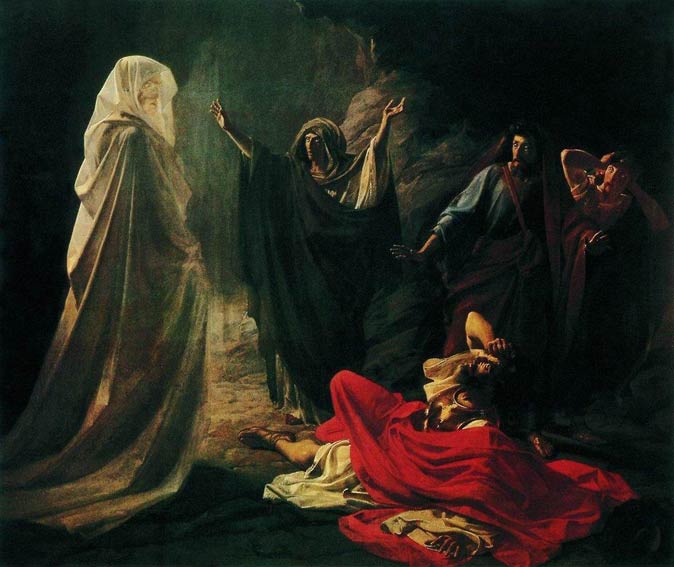
So the king said to her, “Have no fear. What did you see?” The woman said to Shaul, “I see an angel rising from the earth.” He said to her, “What does he look like?” She said, “An old man is rising, wearing a cloak.” Shaul knew that it was Shmu’el, and he paid homage and prostrated himself. Then Shmu’el said to Shaul, “Why have you disturbed me and brought me up?”… (Shmu’el Aleph 28:13-15)1
Sheol (שְׁאוֹל) is translated throughout the Tanakh as grave, pit, and underworld. Sometimes Sheol is also mistranslated as “hell” of which there is no concept within the Tanakh. This is a completely Christian concept that was taken from the pagan belief in “Hades.”
The term Sheol (שְׁאוֹל) does not mean “grave.” The Hebrew language – and by extension the Tanakh – has a separate word for grave. The term used in the Tanakh for grave is kevura (קְבוּרָה) which comes from the root word kavar (קָבַר) which means “to bury.” We see both of these terms used in the story of Rachel’s death.
So Rachel died; she was buried (וַתִּקָּבֵר) along the way to Efrat – that is now Beit-Lechem. And Yaakov set up a standing-pillar over her burial place (קְבֻרָתָהּ), that is Rachel’s burial pillar of today. (Bereishit 35:19-20)2
The term sheol (שְׁאוֹל) also does not mean “pit.” The Tanakh uses the term bowr (בּוֹר) for pit which comes from the root word buwr (בּוּר) which means “to bore into.” We can see the use of both sheol and bowr in the prophecy of Yeshayahu.
Instead, you will be brought down to Sheol (שְׁאוֹל), to the bottom of the Pit (בוֹר)! (Yeshayahu 14:15)3
Sheol (שְׁאוֹל) is not the grave or the pit but is in fact an abode of the dead. Sheol comes from the root word sha’al (שָׁאַל) which means “to ask” or “to inquire” and indicates that Sheol is a place where there are only questions and uncertainty.
Sheol is a place of darkness as we see from the story of Iyov.
…before I go permanently to the land of darkness and the shadow of death. A land whose blackness is like the gloom of the shadow of death, with no orderly systems, and whose luster [or light] is like gloom. (Iyov 10:21-22)4
The inhabitants of this abode of the dead are referred to as shades or “Rephaim.”
Sheol below trembles as you approach. It has awakened the Rephaim (רְפָאִים) of all the rulers of the earth and raised all the kings of the nations from their thrones. (Yeshayahu 14:9)3
The Rephaim are “shadowy and non-personal entities … [who are] shadowy entities that reflected only a semblance of their former selves.”5 Not only are the Rephaim caught in a place where they cannot do anything that is associated with the living, they are also unable to praise God.
Let my prayer reach You. Incline Your ear to my shout. For my soul has had its fill of misfortunes, and my life approaches [Sheol (לִשְׁאוֹל)]. I am reckoned among those who go down to the pit. I have become like a man bereft of strength – among the dead who are released; like the corpses lying in the grave, whom You remember no more, for they have been cut off by Your hand. (Tehillim 88:3-6)4
As can be seen, Sheol is rightfully called the abode of the dead. Sheol is not simply the grave or pit as it is often translated.
————————–
1Aryeh Kaplan. The Living Nach: Early Prophets. Brooklyn: Moznaim Publishing Corporation, 1994.
2Everett Fox. The Five Books of Moses. New York: Schocken Books, 1997.
3Aryeh Kaplan. The Living Nach: Later Prophets. Brooklyn: Moznaim Publishing Corporation, 1995.
4Aryeh Kaplan. The Living Nach: Sacred Writings. Brooklyn: Moznaim Publishing Corporation, 1998.
5Donald Gowan, ed. Westminster Theological Wordbook of the Bible. Louisville, KY: Westminster John Knox Press, 2003.
